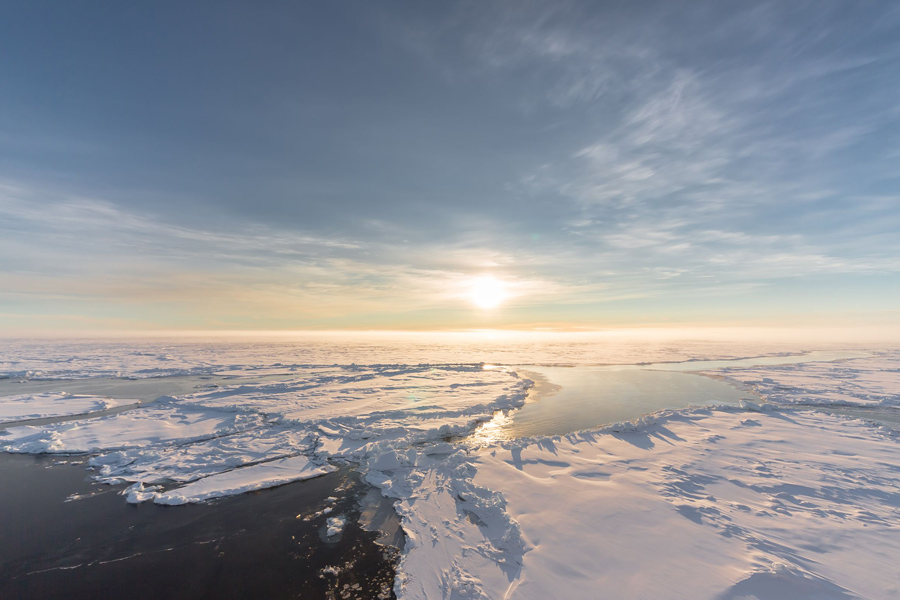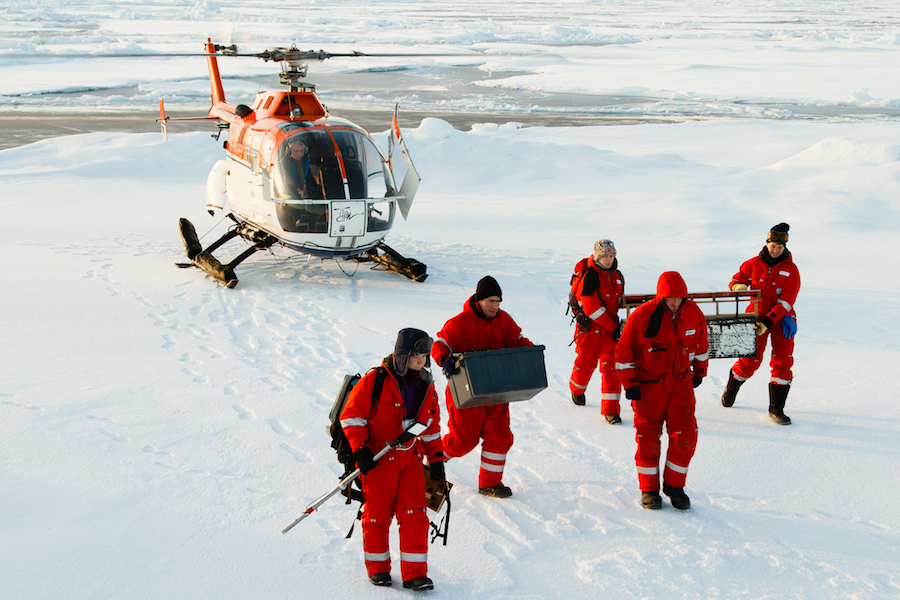Special Places in the Arctic
3.694 metres is how high Gunnbjørns Fjeld soars into the Arctic sky. It is Greenland's highest mountain and the highest mountain north of the Arctic Circle. It was first climbed in 1935 by five British adventurers.

The Jakobshavn Isbræ glacier, also in Greenland, is the world’s fastest moving glacier with an average speed of 17 kilometres per year (status: 2012). The glacier is transporting more and more ice into the ocean at a speed that has increased in the course of the years and almost tripled between 1992 and 2012. One of its icebergs is thought to have collided with the Titanic in 1912. But not only that: melting glaciers throughout the world are responsible for around a third of the observed rise in sea levels.
Life in the Arctic cold
When people think about the Arctic they don’t just think of glaciers: they see icebergs and piles of ice floes, an almost endless horizon and masses of icy water, for example. The city of Murmansk, however, shows that people are also at home in this Arctic landscape. Originally founded in 1916 as Romanov-on-Murman, Murmansk is situated north of the Arctic Circle on the Russian Kola peninsula. With over 300,000 inhabitants it is the largest Arctic city. Due to the warm Gulf Stream its harbour remains ice-free the whole year round and is therefore used as a freight port. At the same time, Murmansk harbour is also a Russian naval basis, providing the Russian Navy with permanent access to the Arctic Ocean and the Atlantic. Siorapaluk is the most northerly settlement in the Arctic and much smaller than Murmansk. It has 42 inhabitants (status: 2018) and is a mere 1,362 kilometres away from the North Pole.
972,000 km2 of nature in the world’s largest national park.
The world’s most northerly and largest national park, the Northeast Greenland National Park, is also sparsely populated. It was established in 1974 and is still very difficult for people to reach. Along with a few researchers, only a few members of the SIRIUS Dog Sled Patrol work in the park. The patrol is responsible for overseeing the National Park. In summer there are also individual groups of tourists.

A million deep-frozen plant seeds
But it is not only people and animals that are at home in the Arctic. There are also lots of plant seeds to be found north of the Arctic Circle: The Svalbard Global Seed Vault in Spitsbergen, Norway houses around one million deep frozen seed samples from all over the world. The samples of wheat, maize and other crop plants are intended to help recultivate the earth following a catastrophe such as drought or floods. The vault, which began operations in 2008 with Norwegian funding, is intended to secure species diversity even in extreme situations.
Above zero degrees: Arctic heat
Another place which is particularly interesting for researchers is located even further north: The Cape Morris Jesup station is the world’s northernmost land-based weather station. The station, which is operated by the Danish Meteorological Office, measured temperatures of above zero degrees Celsius over a period of more than 60 hours in February 2018 – unusually warm for the Arctic. The winter in this region this year was an average of 4.9 degrees Celsius above normal, making it the warmest winter on record.